Documentation Hub
Comprehensive technical manuals and guides to help you master HARSLE machines and optimize your metalworking efficiency
How to Enhance Output with HS-15T Parameter Setting?
- Introduction
- Step 1: Accessing Parameter Settings
- Step 2: Configuring Valve Output and Language
- Step 3: Adjusting X/Y/R Axis Settings
- Step 4: Recording and Managing Pressure Settings
- Step 5: Configuring Slider and Grating Ruler
- Maximizing Results with HS-15T Parameter Setting
- Frequently Asked Questions(FAQ)
- Conclusion
If you’re looking to enhance the output of your HS-15T machine, understanding the parameter setting is essential. By accurately configuring different parameters, you can significantly improve the efficiency and precision of your bending tasks.
In this guide, I’ll walk you through the essential steps and techniques for HS-15T Parameter Setting. Whether you’re working with various materials or different thicknesses, this article provides valuable insights to help you achieve optimal operation. Let’s explore how precise parameter adjustment can lead to higher productivity and reduced errors in your metalworking projects.
Introduction
The HS-15T Parameter Setting is crucial for maximizing machine efficiency and precision. These settings act as the machine’s operational blueprint, guiding its interaction with different materials and thicknesses. By fine-tuning these parameters, you enhance the machine’s adaptability to diverse tasks, reducing waste and errors, which leads to improved productivity and quality of output. Proper parameter configuration saves time and resources, ensuring the machine performs optimally in every operation.
Step 1: Accessing Parameter Settings

To begin optimizing your HS-15T, click on the menu icon on the main page of programming.
From the pop-up menu, select “Parameter Settings” to enter the parameter settings page. This is where you will configure the operational parameters to match your bending requirements.
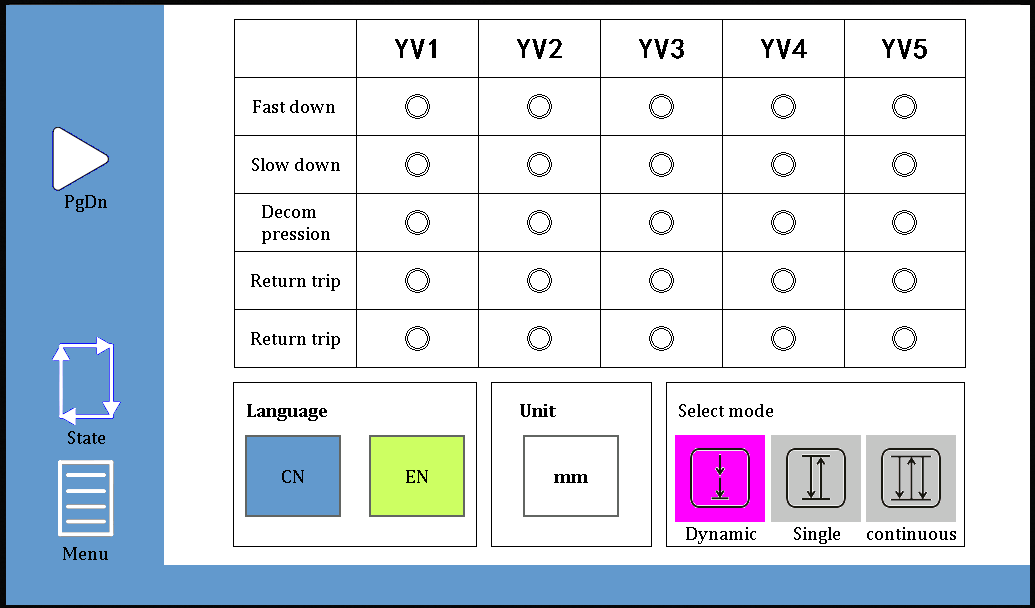
Operational parameters can be configured on this page. Please refer to the following steps for parameter setting.
Step 2: Configuring Valve Output and Language
On the parameter setting page, you can choose the valve output configuration (YV1~YV5), interface language, and working mode.
The HS-15T Parameter Setting process allows you to tailor the machine’s movements across its four motion states: fast down, slow down, return trip, and pressure relief. The output of four motion states may be different for different models, so the output configuration (YV1 ~ YV5) is needed here.
Interface Language Selection: Chinese and EN (English) Options.
Choice of working mode: Point movement、Single time、Continuity.

Point motion mode:
Click the START button (or step on a foot) to start the program, step down the slider and move downward, release and stop. Step on the slider and move upward, then release and stop; when the speed change point is released, the X-axis back stop material will return to the original, so that it is easy to bend the same step again. Automatic step change of support system in point mode.

Single mode:
Click the START button (or step on a foot) to start the program, step on the foot, slide down and press down to the bottom, after the holding time arrives, automatically return to the next step.

Continuous mode
Click the START button (or step on a foot) to start the program, step down, slide down and press down to the bottom. When the holding time arrives, it will automatically return to the next step, so that the cycle can be completed until all the steps are completed. In continuous mode, continuous intervals can be set on more data settings pages.
Remarks:
- Point mode is used in calibration, single mode is used in normal operation, and continuous mode is used in testing machine.
- In the “Manual Moving” and “X/Y/R Axis Navigation” teaching pictures, the mode automatically changes to the slow point mode, after exiting these pictures, it will automatically switch to the original mode.
- If you first step on the switch, then step on the switch is invalid; unlock the switch, then step on the switch.
If the program does not start, step on it for the first time (or press the START button on the screen). It will start the program, and stepping down again will initiate a downward movement.
In single mode or continuous mode, the slider moves upward. If the return time is valid and the return time arrives (the slider has not reached the upper dead point), the slider will no longer move upward and will enter the next step.
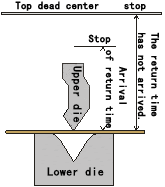
Step 3: Adjusting X/Y/R Axis Settings

Click it on the page will pop up a dialog box prompting users to log in, please enter the correct password (0313), and then click it again to start setting parameters:
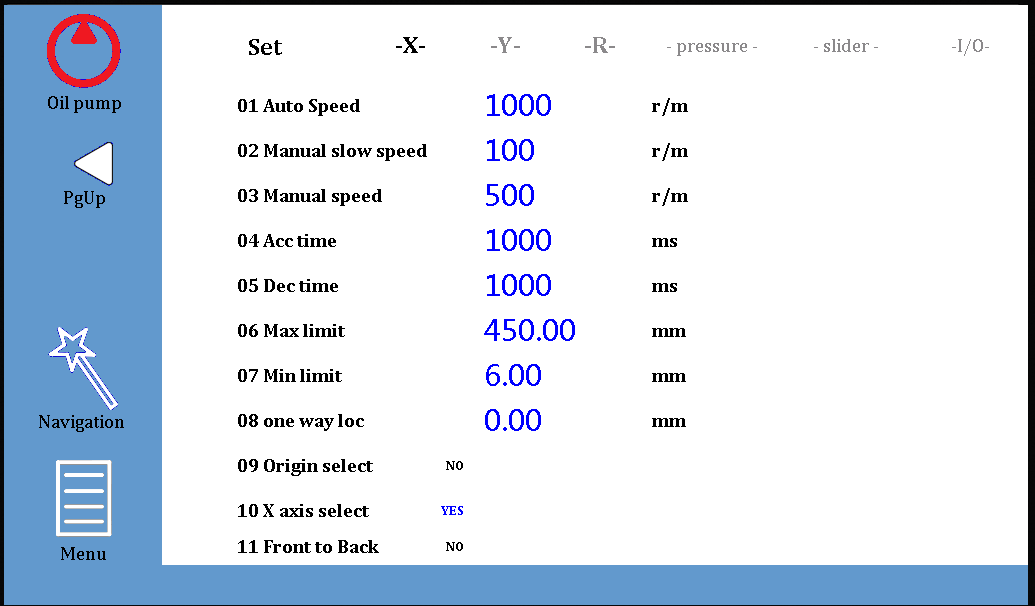
Use the parameter setting page to modify the motion parameters of the X/Y axis (with Y2/R axis as optional). Enable the R Axis by clicking “R Axis is valid,” which will display additional settings.
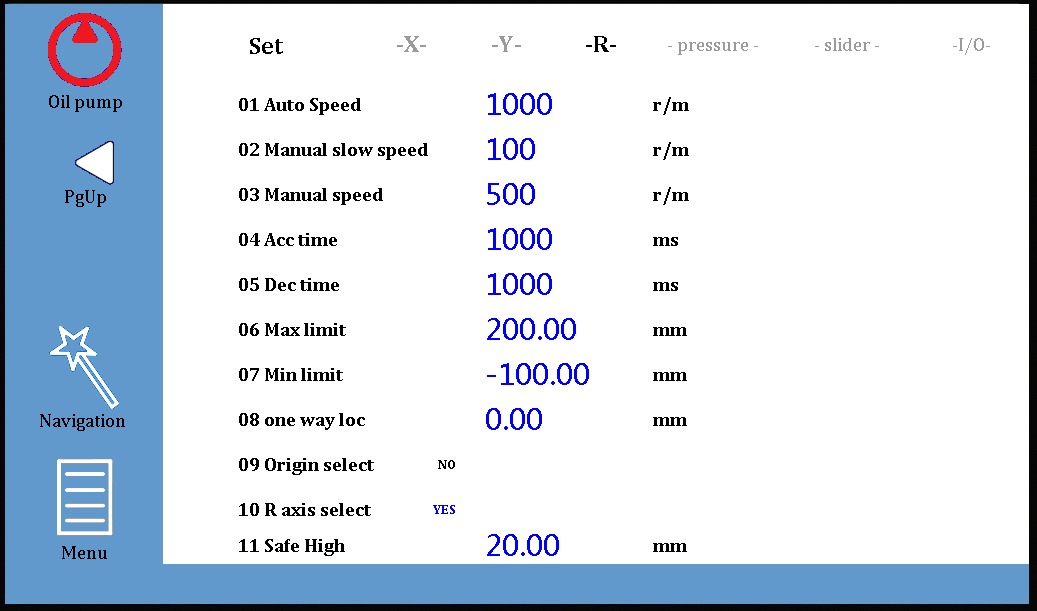
After that, the R-axis related information and setting icons are displayed on the programming page. Clicking on the red box, the gear parameters of the gear finger can be set. It is convenient to select different gear according to the workpiece processed.
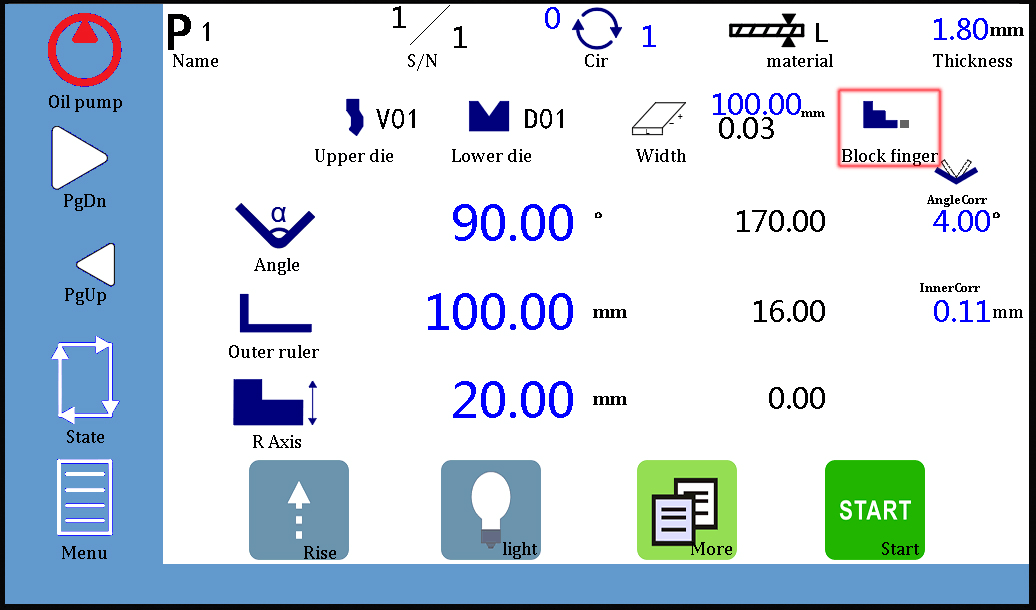
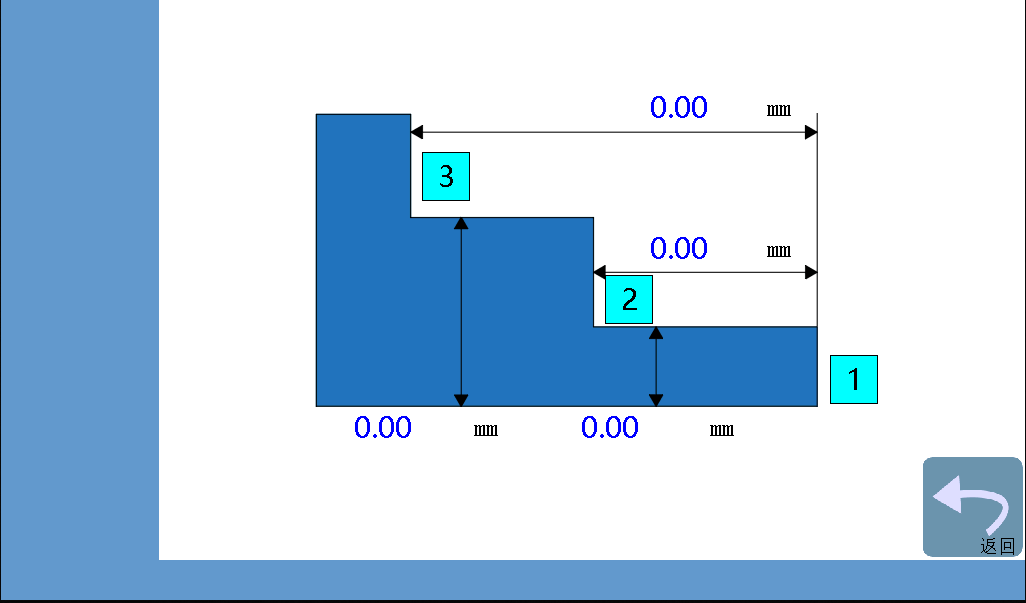
Altering these settings in the HS-15T Parameter Setting is crucial for handling varied workpieces.
Step 4: Recording and Managing Pressure Settings
On the ‘-pressure-‘ page, record the bending pressure and deflection for different electrical signals. The system calculates the relationship between bending pressure and voltage, aiding in precise operations.
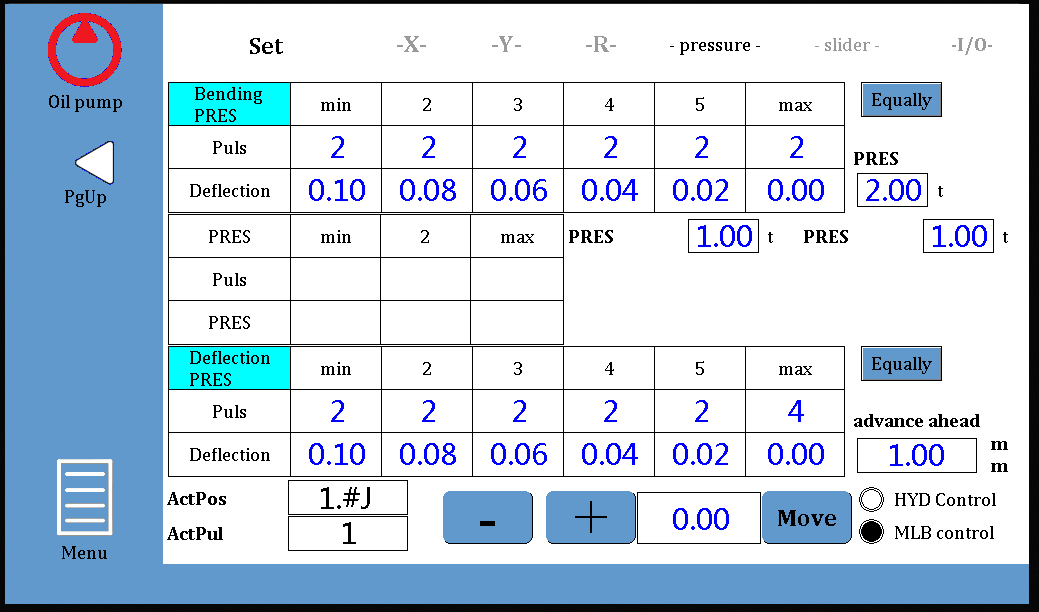
This facet of the HS-15T Parameter Setting allows for easy adjustments based on actual operational needs, enhancing efficiency.
Step 5: Configuring Slider and Grating Ruler
Adjust slider parameters and set the grating ruler on the ‘-slider-‘ page.
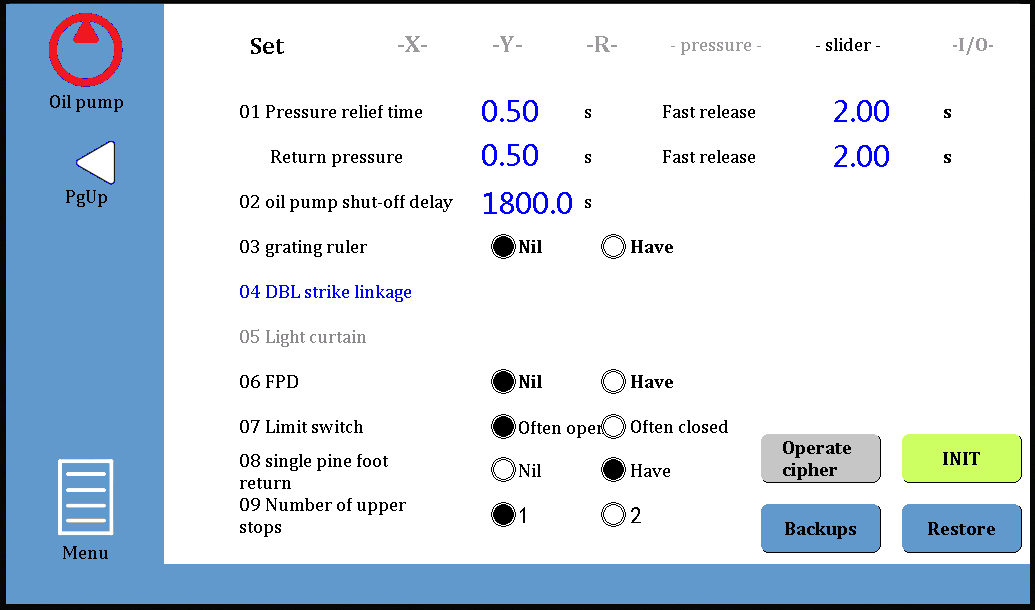
Remarks:
- Pressure relief time: The return journey begins after the duration of pressure relief arrives.
- Oil pump automatic shutdown delay: When the machine is not operated, the oil pump automatically shuts down after the time arrives. Default: 1800 seconds, setting range: 300-3276.7 seconds.
By aligning these components per your operational scenarios, you ensure precise bending operations. This is a critical component of the HS-15T Parameter Setting, contributing to the accuracy and quality of your output.
Maximizing Results with HS-15T Parameter Setting
Benefits of Detailed HS-15T Parameter Setting
By thoroughly configuring your HS-15T Parameter Setting, you minimize errors and increase throughput, resulting in a streamlined production process. This guide ensures you leverage your machine’s full capabilities, adapting it to handle diverse materials and project requirements.
Troubleshooting Common Issues
If you encounter issues during parameter setup, refer to the machine’s manual or support resources. Understanding HS-15T Parameter Setting helps in diagnosing and resolving these issues swiftly, maintaining uninterrupted productivity.
By following these structured steps, you can enhance your HS-15T’s output effectively, utilizing the parameter settings to tailor machine operations precisely to your project needs. Keep revisiting and adjusting these parameters as required to maintain high-quality results.
Frequently Asked Questions(FAQ)
What are the essential HS-15T Parameter Settings for optimal machine performance?
Proper HS-15T Parameter Setting involves adjusting speed, pressure, and material thickness to suit specific tasks. This ensures precision and efficiency in your operations.
How often should I update the HS-15T Parameter Settings for different materials?
Update your HS-15T Parameter Settings whenever you switch materials or thicknesses. Regular updates help maintain optimal performance and prevent errors.
How can I improve the accuracy of my HS-15T through parameter settings?
To enhance accuracy, regularly calibrate your machine and adjust parameters such as bending angle and back gauge position based on the material and job requirements.
Conclusion
In summary, optimizing your HS-15T Parameter Setting involves several critical steps: accessing the parameter settings, configuring valve output and language, adjusting X/Y/R axis settings, recording and managing pressure settings, and fine-tuning the slider and grating ruler. These steps collectively enhance machine performance, leading to increased output and efficiency.
For the best results, implement these parameter settings carefully and consistently. If you need further assistance or have specific questions, we encourage you to contact our support team. Additionally, explore our other resources and documentation to deepen your understanding of the HS-15T’s capabilities and maintain its peak performance.













